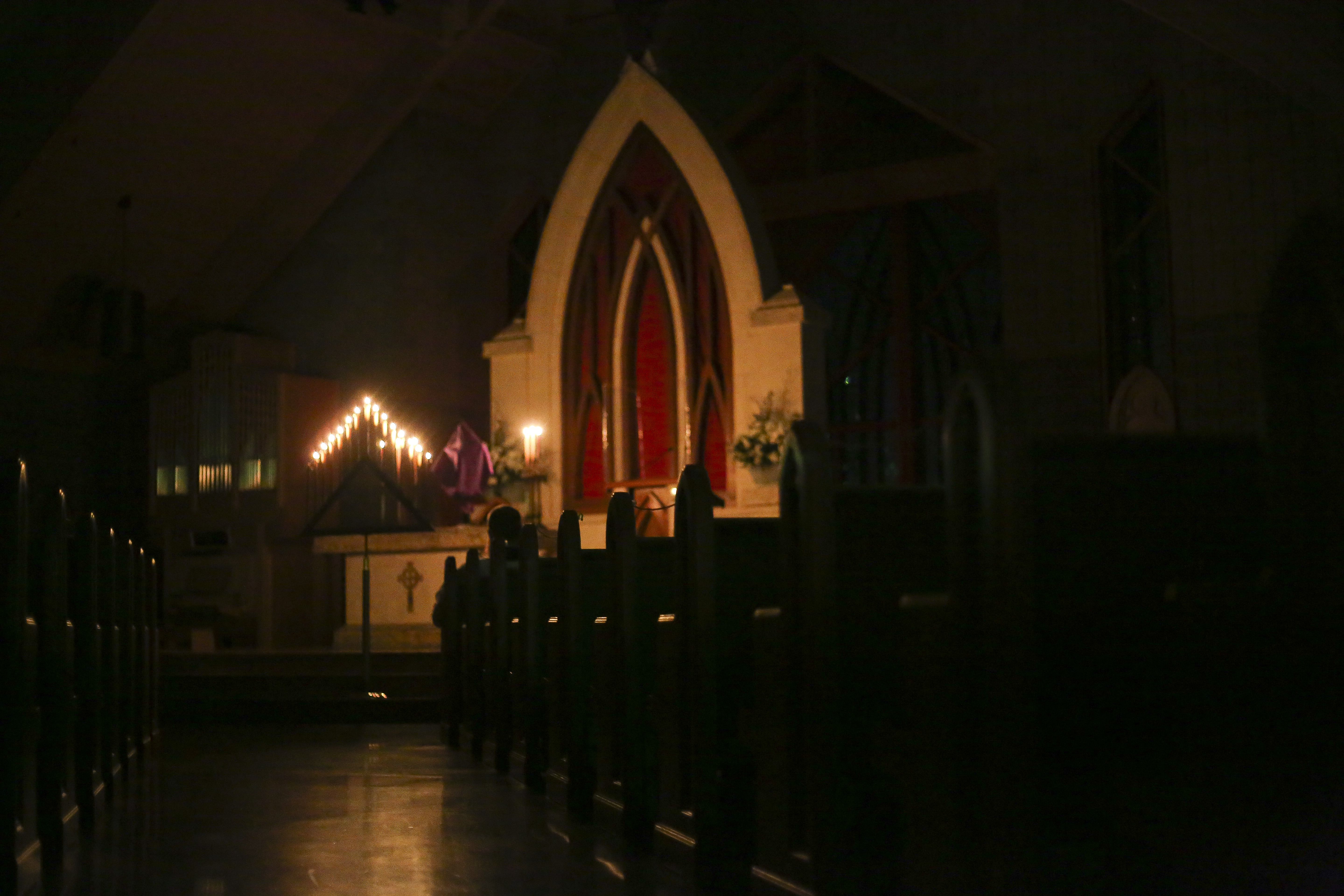TENEBRÆ MMXXV
PHYSICAL PRAYER, BEAUTIFUL LITURGY

Tenebrae is one of the most beautiful liturgies in Christianity. Many have tried to replicate its mystique or adapt it to other circumstances, but the authentic Tenebrae is without peer or equal. It is hard prayer, exhausting, a trial for charity and devotion, and worth it.
Christ in the Garden. Christ in desolation. The loneliness of suffering, and the loneliness of the tomb. Tenebrae.
It's going to be sweet, so be not afraid! Even if you have no idea what's going on, you can still enjoy the experience, and you will pick up the rhythm very quickly.
The important part:
Tenebrae on Holy Thursday and Good Friday is at 4:30 a.m.; Holy Saturday at 5 a.m. at St. Mary's main church.
All are welcome.
Come, even if you are late.
Ask me anything.
The rest of the story:
Tenebrae, which is Matins and Lauds of the Triduum, will be sung at St. Mary's early in the morning on Thursday, Friday, and Saturday of Holy Week. We should be done before 6:30 a.m. each day (being mindful of the sunrise). Obviously, it's crazy early. If you wake up late, or just want to arrive late, don't worry about it; come anyway, even if you're late.
The church will be quite dark (hence the name, "tenebrae"). The best way to bring a book for Tenebrae would be to view a PDF on a tablet, preferably white text on a black background. The text with English translation can be found a variety of places, like the Officium Divinum website.
How I am going to do it
These PDFs on my tablet: Thursday, Friday, Saturday, & Lamentations (and also this for Saturday's second nocturn)
Resources
Booklet PDF with English & Latin that I found here.
Other booklets
Alternate tones of the Lamentations
Liber Usualis
'57 Ordo Hebdomadae Sanctae
Here's what it looks like
Once upon a time I made a sketchy video series on "How to Chant Tenebrae." Part I, Part II, and Part III.
What to bring
Your own Liber Usualis (PDF) or similar book (my favorite source is the '57 Ordo Hebdomadae Sanctae) and a book light, or
-> Your own tablet with the appropriate PDF ready to go and noises silenced.
Quick rules for standing, sitting, and kneeling
(1) Begin standing for the first antiphon. All sit after the cantor intones the first psalm.
(2) After the repetition of the third antiphon, all stand for the versicle and response. Remain standing as all recite the Pater Noster silently. All sit upon its completion.
(3) After the repetition of the third antiphon of the second nocturn, all stand for the versicle and response. Remain standing as all recite the Pater Noster silently. All sit upon its completion.
(4) After the repetition of the third antiphon of the third nocturn, all stand for the versicle and response. Remain standing as all recite the Pater Noster silently. All sit upon its completion.
(5) After the repetition of the fifth antiphon of Lauds, all stand for the versicle and response, remaining standing through the Benedictus.
(6) After the repetition of the Benedictus antiphon, all kneel for the Christus factus est, and remain kneeling until after the completion of the collect.